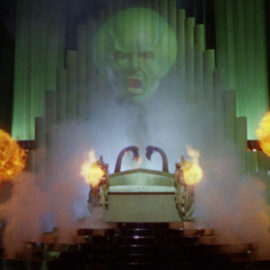

This article is an excerpt from the Shortform summary of "Thinking in Systems" by Donella H. Meadows. Shortform has the world's best summaries of books you should be reading.
Like this article? Sign up for a free trial here .
What are the elements of a system? How do these elements work with stocks and flows to enable to system to run smoothly?
The elements of a system are the same no matter what type of system it is. Knowing the elements of a system can help you understand systems basics, and how to ensure a system’s success.
Read more about the elements of a system and what they mean.
Elements of a System and Stocks and Flows
What are the elements of a system that make it work? How do the attributes of the system work together?
Parameters
First on the list of the elements of a system are paremeters. Parameters are numbers described in the system. These include the level of the stock, the quantity of the flows, and more generally it includes swapping individual elements in the same system.
We spend the vast majority of our time worrying about parameters, but the author argues this is definitively the least effective place to intervene. For example:
- When concerned about the national debt, politicians spend much of their time negotiating incremental changes to budgets and tax rates. Yet the national debt continues growing, regardless of who’s in power.
- The Federal Reserve tinkers with interest rates, but this hasn’t ever stopped economic cycles from happening.
Adjusting parameters doesn’t work well because there are stronger system effects at play, such as feedback loops, incentive structures, and delays. If a system is described by a runaway loop, tweaking linear parameters does not meaningfully change the system’s behavior. You’ll have to look at other elements of a system.
A minority of parameters can become effective leverage points when they affect higher leverage points in this list, such as the growth rate in a reinforcing feedback loop or the time delay. But the author argues these are rarer than most people think. Parameters are important characteristics of a system.
Stocks
Stocks are also important attributes of a system. We’ve learned that stocks are buffers that can stabilize the system over fluctuating flow rates. Your bank account is a stock of money that helps you withstand volatility in your income and expenses.
Changing the stock changes the behavior of the system. You can stabilize a system by increasing the stock, but this comes at the cost of efficiency—larger stocks cost more to build or maintain. In contrast, you can increase efficiency by decreasing the stock, but this comes at the cost of lower robustness. These highlight the characteristics of a system.
- For example, just-in-time manufacturing decreases the size of the inventory while relying on more frequent deliveries. This makes it more agile to shifting customer demand, but makes it more vulnerable to supply disruptions.
Stocks can be effective leverage points, but they are often slow to change, especially when they’re physical in nature.
- Once a dam is constructed, the stock capacity is fixed – it would take a lot of effort to change the stock.
Stock-and-Flow Structure
Changing the stock-and-flow structure means changing which flows are connected to which stocks. This can change the behavior of the system and the elements of a system.
- In constructing new highways, roads, and parking lots, urban planners reconfigure how traffic flows the stock-and-flow structure.
- (Shortform example: A government could change how money flows—currently it receives taxation from citizens and allocates budget to departments, which then returns to citizens. Changing the structure of this could lead to different system behaviors.)
However, the stock-and-flow structure is hard to change once it’s set, especially if it’s physical. It’s better to design it well first—understand the structure’s limitations, and prevent fluctuations that exceed the structure’s capacity.
Delays
Delays are other attributes of a system. As we’ve seen, delays in feedback loops tend to cause oscillations. In turn, oscillations worsen the effectiveness of your decisions, because you’re making decisions with delayed information. Furthermore, the results of your actions are delayed—by the time your actions have results, the situation may have changed so that your actions have become inappropriate.
Changing the length of delays affects system behavior:
- Delays that are too short cause overreaction, leading to higher-frequency oscillations.
- Delays set just right can dampen oscillations and introduce stability.
- Delays that are too long can lead to exploding oscillations, or push a system past a breaking point beyond which it cannot return (such as overfishing to extinction).
Changing delays can cause big changes to system behavior. Just make sure you change delays in the right direction—decreasing delays may seem intuitively good, but they can lead to unwanted overreactions.
However, many delays can’t be changed—a baby takes a certain number of years to grow to become an adult; fish can only reproduce so quickly. In these cases, you’ll need to intervene elsewhere in the system and evaluate other attributes of a system.
These characteristics of a system are all important to the way a system works.

———End of Preview———
Like what you just read? Read the rest of the world's best summary of Donella H. Meadows's "Thinking in Systems" at Shortform .
Here's what you'll find in our full Thinking in Systems summary :
- How the world, from bathtub faucets to fish populations, can be seen as simple systems
- The key system traps that hold back progress, such as escalating arms races and policy addiction
- Why seeing the world as systems can give you superpowers in work and life






